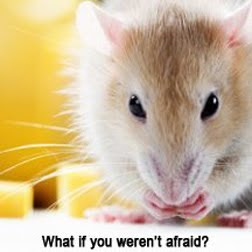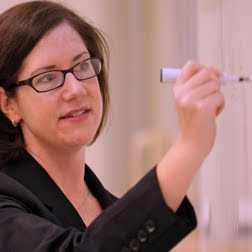 As crazy as it sounds, some psychologists are jumping on the fright makes right band wagon. According to a study published in Health Psychology (as highlighted in a weight loss article), showing kids photos of obese people and arterial diseases for 30 minutes helps reduce the urge to eat sweets and foods that are fattening.
As crazy as it sounds, some psychologists are jumping on the fright makes right band wagon. According to a study published in Health Psychology (as highlighted in a weight loss article), showing kids photos of obese people and arterial diseases for 30 minutes helps reduce the urge to eat sweets and foods that are fattening.
Are you kidding me?
Looking at arterial diseases for 30 minutes will suppress anyone's appetite to eat anything. Besides, some of us saw the movie version of this study. A Clockwork Orange was produced in 1971, starring Malcolm McDowell as a protagonist who is "programmed" to detest violence by being subjected to graphically violent films, eventually conditioning him to suffer crippling bouts of nausea at the mere thought of violence. (The book came out in 1962.)
The study hints at the same thing, except the villain in this case isn't violence as much as it might be a Hostess cupcake.
Teach Reason Over Aversion.
In a recent Wall Street Journal article, David Wessel had some harsh words about where America is today, saying the "deeper issue and root cause of our malaise is the broken U.S. educational model that is producing bloated people with bloated egos and senses of entitlement, broken values, a broken work ethic and an intellectual incompetence with which to think and innovate."
I'm not sharing Wessel's words to give more attention to the blight within his premise, even if some of it touches on truth. I'm including it because it represents the polar opposite of the study. Whereas the study suggests America's woes might be handled though aversion programming, Wessel is taking a (albeit heavy handed) approach that we might teach deductive reasoning, critical thinking skills, and personal responsibility. One looks to curb a symptom; the other looks toward fixing the cause.
Of course, our society doesn't always want reason. Ask any marketer today that is hell-bent on deciphering "influence." They don't want people to make the best decisions; they want go head to head with competitors and let the best "influencer" win. Never mind the facts.
In some cases, it goes well beyond marketers. There are plenty of political parties and institutions and organizations that want to do the same. They don't want people to make educated choices but rather to be comfortable in the leadership's ability to influence its way out of everything. So much so, some people are studying how do it, regardless of the consequence.
What's The Difference?
Aversion programming and fear marketing teach children rote memorization that may lead to equally harmful eating disorders. To avoid those, you have to teach your children to make proper choices about what to eat using reason and responsibility.
 Personally, I never worry about what my kids eat or don't eat. I guide them toward making healthier choices that will eventually turn into making better choices as adults (I hope). That means before they can have the pudding, they have to eat their meat. Or more specifically, despite how fun it is to drop in a Pink Floyd reference, fruit before some other snack.
Personally, I never worry about what my kids eat or don't eat. I guide them toward making healthier choices that will eventually turn into making better choices as adults (I hope). That means before they can have the pudding, they have to eat their meat. Or more specifically, despite how fun it is to drop in a Pink Floyd reference, fruit before some other snack.
By asking them to eat fruit first, they often find the apple or orange or peach or plum satisfies their craving for something sweet or fills the small empty feeling they might have in the late afternoon (without spoiling dinner). This indirectly reminds them that fruit is good, tasty, filling, healthy, and makes you feel good without feeling guilty. At the same time, it does't discourage them from looking at a cookie and feeling guilty or as the inspiring study suggests — aversion.
Nowadays, my kids have even passed on offers of candy in favor of fruit if it's available, not because they have to but because they want to. Imagine that. And I never had to show them pictures of diseases and unhealthy people.
Marketing might learn a lesson here too. If you win the influence game, you win a customer for a day. If you truly have the better product and can deliver on your brand promise, you will win a customer for life. People don't have to be frightened. Let the politicos keep that one to themselves.














































